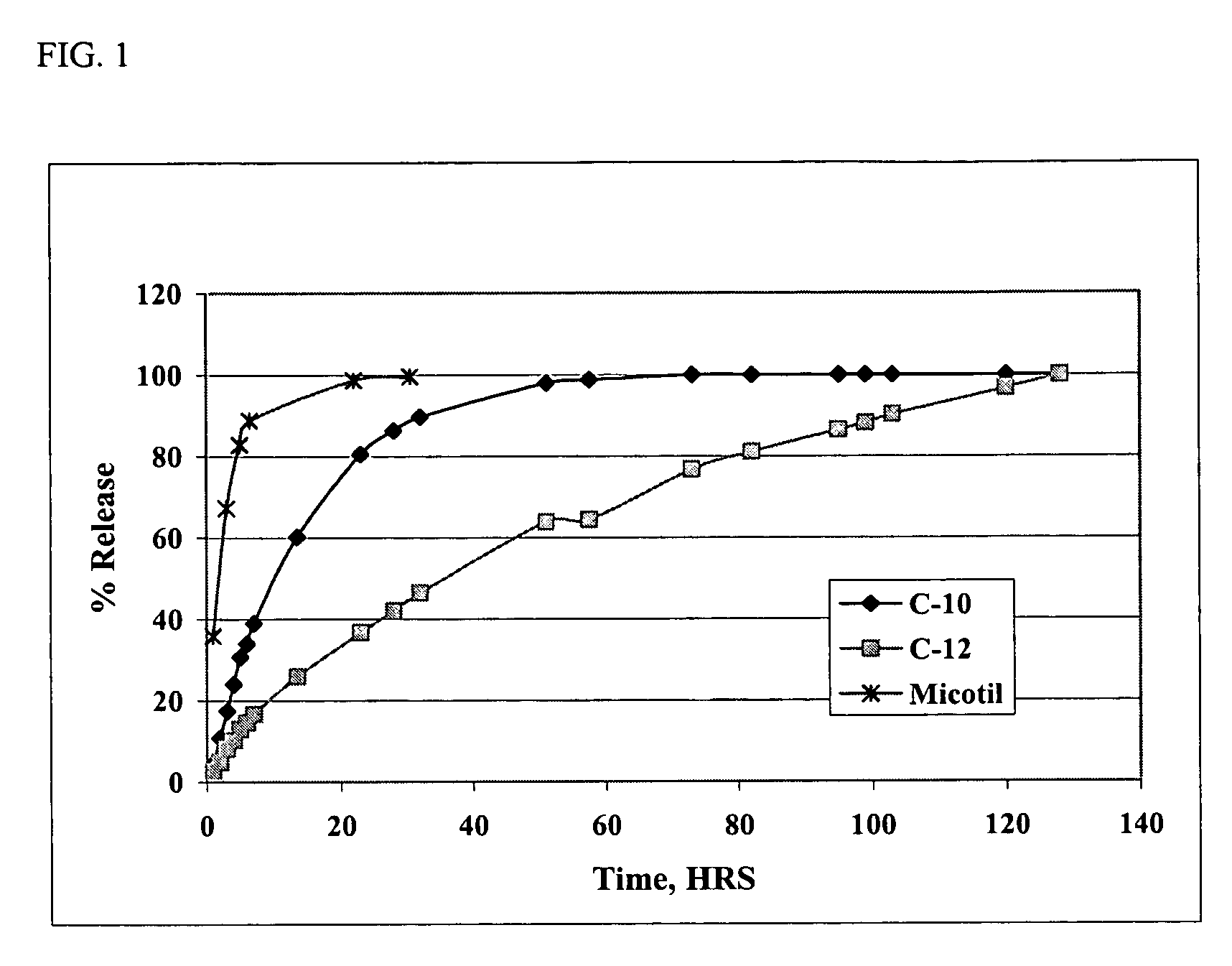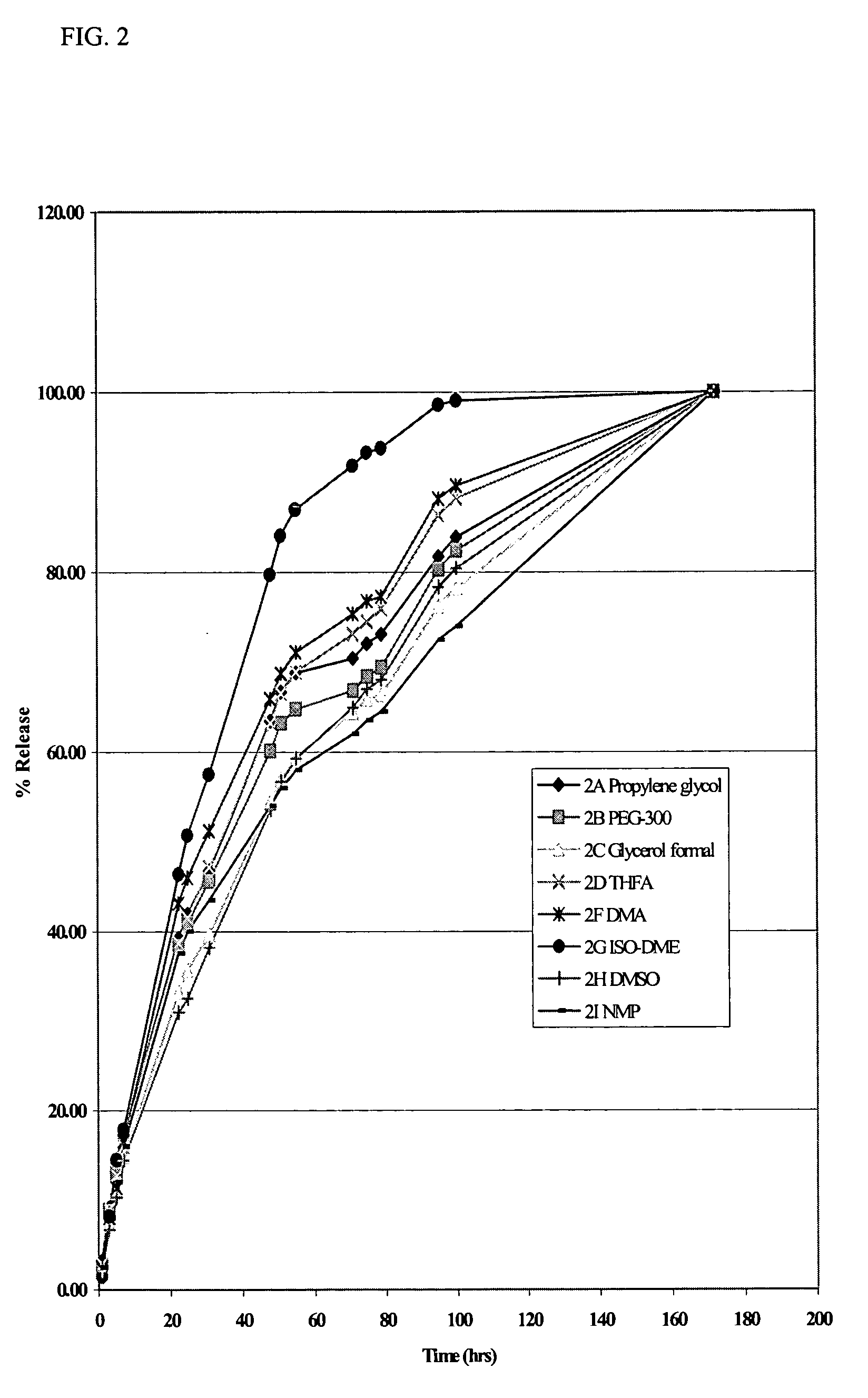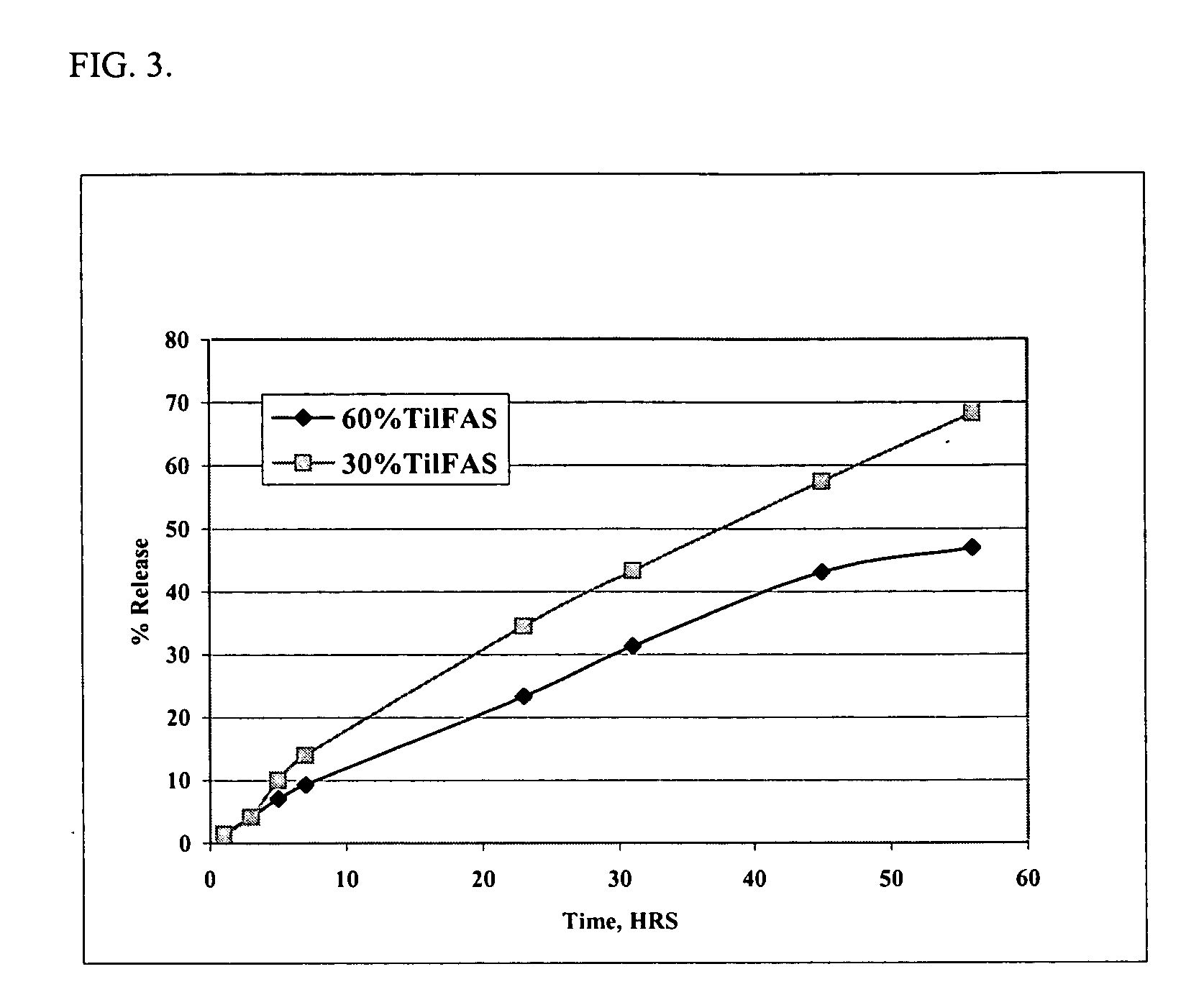Method for treating bacterial infections in horses or pigs with tilmicosin
a technology of tilmicosin and bacterial infection, which is applied in the field of treating bacterial infection in horses or pigs, can solve the problems that tilmicosin has not been used in particular species, and achieve the effect of reducing the toxicity of tilmicosin and reducing the investment in time and resources
- Summary
- Abstract
- Description
- Claims
- Application Information
AI Technical Summary
Benefits of technology
Problems solved by technology
Method used
Image
Examples
example 1
In Vitro Release of Tilmicosin—Effect of Lipophilic Acid
[0058] 10 Grams (0.0115 moles) of tilmicosin and 0.0253 moles of either decanoic acid or lauric acid were weighed into a flask and made up to a final volume of 100 mL with N-methyl-pyrrolidone. The resulting solution was then stirred for 60 minutes to provide a clear solution. One mL aliquots of the resulting solutions were then sealed in dialysis bags, and the dialysis bag suspended in flasks containing 150 ml of phosphate-buffered saline at pH 7.4. A precipitate was observed to form in the dialysis bag within about 1 hour. Aliquots of saline were then removed at various intervals and the concentration of tilmicosin in the saline was determined using high pressure liquid chromatography (HPLC).
[0059] For HPLC analysis 100 μL of the saline solution was injected on a Phenomenex Luna 5 μM phenyl-hexyl 100A, 250×4.6 mm analytical column operated at a flow rate of 1.7 mL / min. The HPLC was interfaced to a UV detector operated at 28...
example 2
In Vitro Release of Tilmicosin—Effect of Solvent
[0061] Solutions of the di(decanoic acid) salt of tilmicosin were prepared in several water-miscible solvents by combining 10 grams (0.0115 moles) of tilmicosin and 0.0253 moles of decanoic acid in 100 mL of various solvents. In vitro release rates were then measured using the dialysis method of Example 1. The rates of release of tilmicosin as a function of time are shown in FIG. 2. The results show that the rate of release of tilmicosin varies with the solvent, but that all of the solvents provide a slower release rate than that observed with the phosphate salt, i.e., Micotil® as shown in FIG. 1.
example 3
In Vitro Release of Tilmicosin—Effect of Tilmicosin Concentration
[0062] Solutions of the di(decanoic acid) salt of tilmicosin were prepared by combining 30 grams (0.0345 moles) or 60 grams (0.0690 moles) of tilmicosin with 2 equivalents of decanoic acid in N-methyl-pyrrolidone and filling to a final volume of 100 ml. The in vitro release rates were measured using the dialysis method of Example 1. The data are presented in FIG. 3. The data demonstrate that higher concentrations of tilmicosin result in a slower release rate of tilmicosin.
PUM
| Property | Measurement | Unit |
|---|---|---|
| Fraction | aaaaa | aaaaa |
| Fraction | aaaaa | aaaaa |
| Fraction | aaaaa | aaaaa |
Abstract
Description
Claims
Application Information
 Login to View More
Login to View More - R&D
- Intellectual Property
- Life Sciences
- Materials
- Tech Scout
- Unparalleled Data Quality
- Higher Quality Content
- 60% Fewer Hallucinations
Browse by: Latest US Patents, China's latest patents, Technical Efficacy Thesaurus, Application Domain, Technology Topic, Popular Technical Reports.
© 2025 PatSnap. All rights reserved.Legal|Privacy policy|Modern Slavery Act Transparency Statement|Sitemap|About US| Contact US: help@patsnap.com



